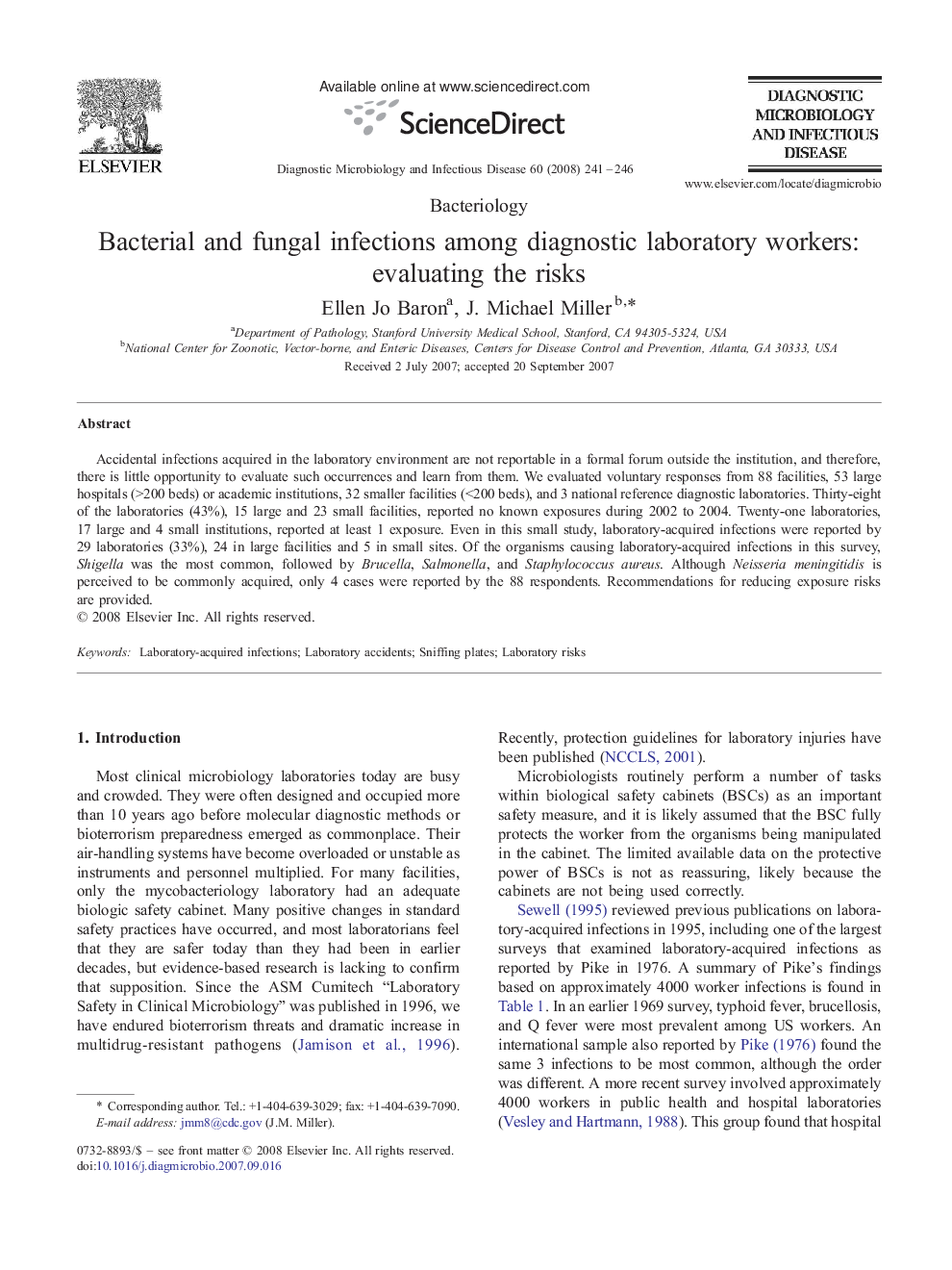| Article ID | Journal | Published Year | Pages | File Type |
|---|---|---|---|---|
| 3348660 | Diagnostic Microbiology and Infectious Disease | 2008 | 6 Pages |
Accidental infections acquired in the laboratory environment are not reportable in a formal forum outside the institution, and therefore, there is little opportunity to evaluate such occurrences and learn from them. We evaluated voluntary responses from 88 facilities, 53 large hospitals (>200 beds) or academic institutions, 32 smaller facilities (<200 beds), and 3 national reference diagnostic laboratories. Thirty-eight of the laboratories (43%), 15 large and 23 small facilities, reported no known exposures during 2002 to 2004. Twenty-one laboratories, 17 large and 4 small institutions, reported at least 1 exposure. Even in this small study, laboratory-acquired infections were reported by 29 laboratories (33%), 24 in large facilities and 5 in small sites. Of the organisms causing laboratory-acquired infections in this survey, Shigella was the most common, followed by Brucella, Salmonella, and Staphylococcus aureus. Although Neisseria meningitidis is perceived to be commonly acquired, only 4 cases were reported by the 88 respondents. Recommendations for reducing exposure risks are provided.
